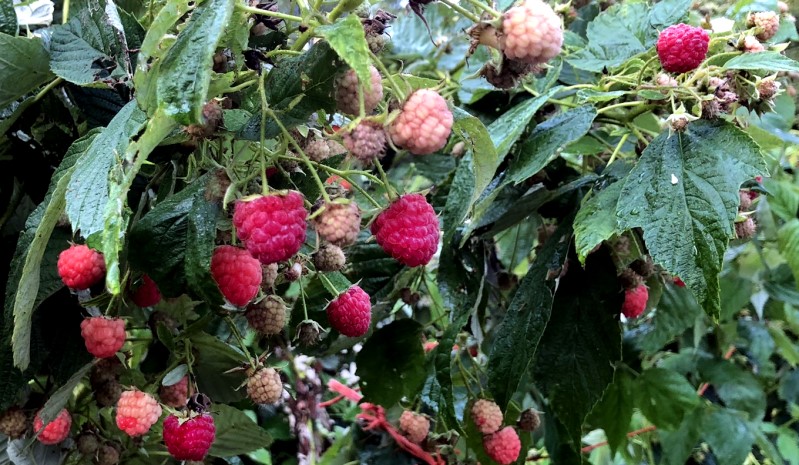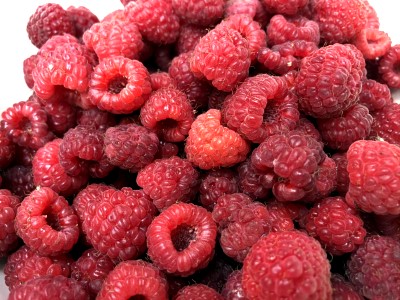
We decided to grow raspberries again and started with about 16 plants which we purchased from a mail order nursery. They arrived in the spring as dead looking sticks about foot long, with a few hairy roots at one end. By the end of the summer, a few had died, but most had put out leaves and grown a few feet in length.
This variety of raspberry is capable of putting out two crops per year, one in June and the second in the fall. We did not prune these at the end of the season but left them to be the “floricanes,” the ones that produce an early crop in their second year. Once they have born fruit, these vines die, turning dark brown and woody. So at the end of June, we cut these old canes and removed them from the patch, leaving the new first year growth or “primacanes.”
The primacanes that came up from the roots of our planting last year virtually exploded from the ground. There were so many, we transplanted some into a second row. Those primacanes are now 10 feet or more tall, with huge heads filled with berries, and often there are several heads on one plant. The canes get so tall they require support with posts and wire trellising. The fruit on the heads is very heavy requiring support as well or they may break.
We had trouble in June and for a couple weeks in the fall with raccoons climbing into the patch and breaking canes with their weight as they went after the berries. We caught three in the have-a-heart trap, along with a possum, and have not noticed any more disturbance since relocating them about 5-7 miles away.

I frequently pick over a quart a day of raspberries, and during the peak a few quarts! Our favorite way to consume them is with a bowl of chocolate “ice bean”! Whatever we don’t eat each day goes into the freezer for winter.



